Related Research Articles

Timothy Francis Leary was an American psychologist and author known for his strong advocacy of psychedelic drugs. Evaluations of Leary are polarized, ranging from bold oracle to publicity hound. According to poet Allen Ginsberg, he was "a hero of American consciousness", and writer Tom Robbins called him a "brave neuronaut". During the 1960s and 1970s, Leary was arrested 36 times. President Richard Nixon called him "the most dangerous man in America".
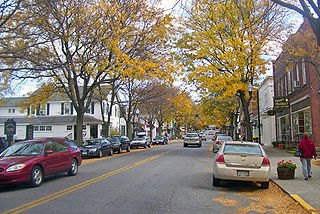
Millbrook is a village in Dutchess County, New York, United States. Millbrook is located in the Hudson Valley, on the east side of the Hudson River, 90 miles (140 km) north of New York City. Millbrook is near the center of the town of Washington, of which it is a part. In the 2020 census, Millbrook's population was 1,455. It is often referred to as a low-key version of the Hamptons, and is one of the most affluent villages in New York.
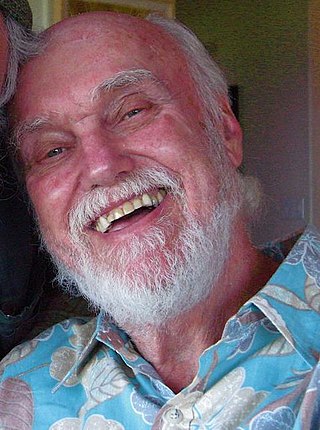
Ram Dass, also known as Baba Ram Dass, was an American spiritual teacher, guru of modern yoga, psychologist, and writer. His best-selling 1971 book Be Here Now, which has been described by multiple reviewers as "seminal", helped popularize Eastern spirituality and yoga in the West. He authored or co-authored twelve more books on spirituality over the next four decades, including Grist for the Mill (1977), How Can I Help? (1985), and Polishing the Mirror (2013).
The eight-circuit model of consciousness is a holistic model originally presented as psychological philosophy by Timothy Leary in books including Neurologic (1973) and Exo-Psychology (1977), later expanded on by Robert Anton Wilson in his books Cosmic Trigger (1977) and Prometheus Rising (1983), and by Antero Alli in his books Angel Tech (1985) and The Eight-Circuit Brain (2009), that suggests "eight periods [circuits]" within the model. The eight circuits, or eight systems or "brains", as referred by other authors, operate within the human nervous system. Each corresponds to its own imprint and subjective experience of reality. Leary and Alli include three stages for each circuit, detailing developmental points for each level of consciousness.

The Bardo Thodol, commonly known in the West as The Tibetan Book of the Dead, is a terma text from a larger corpus of teachings, the Profound Dharma of Self-Liberation through the Intention of the Peaceful and Wrathful Ones, revealed by Karma Lingpa (1326–1386). It is the best-known work of Nyingma literature. In 1927 the text was one of the first examples of both Tibetan and Vajrayana literature to be translated into a European language and arguably continues to this day to be the best known.
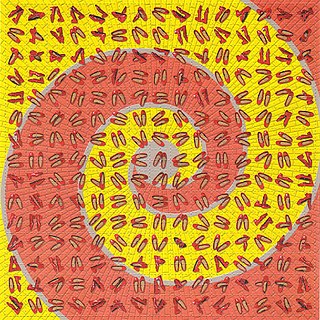
The psychedelic drug lysergic acid diethylamide (LSD) was first synthesized on November 16, 1938, by the Swiss chemist Albert Hofmann in the Sandoz laboratories in Basel, Switzerland. It was not until five years later on April 19, 1943, that the psychedelic properties were found. Today, the discovery of LSD is celebrated worldwide during the annual Bicycle Day holiday, serving also as the day celebrating the psychedelic revolution in general.
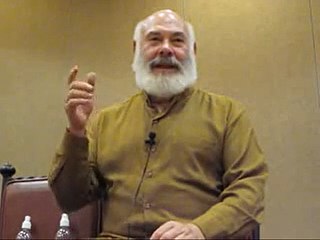
Andrew Thomas Weil is an American medical doctor who advocates for integrative medicine including the 4-7-8 breathing technique.
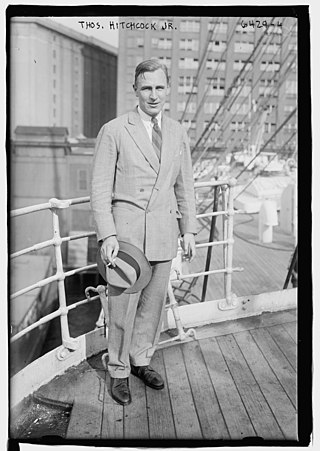
Thomas Hitchcock Jr. was an American polo player and aviator who was killed in an air crash during World War II. He was inducted posthumously into the Polo Hall of Fame.
The Brotherhood of Eternal Love was an organization of drug users and distributors that operated from the mid-1960s through the late 1970s in Orange County, California. They were dubbed the Hippie Mafia by the police. They produced and distributed drugs in hopes of starting a "psychedelic revolution" in the United States.

Nicholas Sand was a cult figure known in the psychedelic community for his work as a clandestine chemist from 1966 to 1996 for the Brotherhood of Eternal Love. Sand was part of the League for Spiritual Discovery at the Millbrook estate in New York, has been credited as the "first underground chemist on record to have synthesized DMT" and is known for manufacturing large amounts of LSD.
Ego death is a "complete loss of subjective self-identity". The term is used in various intertwined contexts, with related meanings. Jungian psychology uses the synonymous term psychic death, referring to a fundamental transformation of the psyche. In death and rebirth mythology, ego death is a phase of self-surrender and transition, as described by Joseph Campbell in his research on the mythology of the Hero's Journey. It is a recurrent theme in world mythology and is also used as a metaphor in some strands of contemporary western thinking.

A web template system in web publishing allows web designers and developers work with web templates to automatically generate custom web pages, such as the results from a search. This reuses static web page elements while defining dynamic elements based on web request parameters. Web templates support static content, providing basic structure and appearance. Developers can implement templates from content management systems, web application frameworks, and HTML editors.

USCO was an American media art collective in the 1960s, founded by Gerd Stern, Michael Callahan, Steve Durkee, Judi Stern, and Barbara Durkee in New York. The name USCO is an acronym for Us Company or the Company of Us. The collective was most active during the years 1964–66. USCO exhibited in the United States, Canada, and Europe, and is considered a key link in the development of expanded cinema, visual music, installation art, multimedia, intermedia, and the Internet. In addition, USCO's strobe environments heralded new media art.

League for Spiritual Discovery (LSD) was a spiritual organization inspired by the works of Timothy Leary, and strove for legal use of lysergic acid diethylamide (LSD) for the purpose of meditation, insight, and spiritual understanding. It was in existence during the mid-to-late 1960s, and eventually closed by Leary. The New York Center for the League of Spiritual Discovery, in existence for around a year, was co-founded by Timothy Leary and Nina Graboi in 1966. The center was the first LSD-based meditation center in Manhattan.

The Zihuatanejo Project was a psychedelic training center and intentional community created during the beginning of the counterculture of the 1960s by Timothy Leary and Richard Alpert under the umbrella of their nonprofit group, the International Federation for Internal Freedom (IFIF). The community was located in Zihuatanejo, Guerrero, Mexico, and took up residence at the Hotel Catalina in the summers of 1962 and 1963.

The Original Kleptonian Neo-American Church (OKNeoAC), mostly shorted Neo-American Church, is a religious organization based on the use of psychedelic drugs as a sacrament.
The psychedelic churches exist to promote and defend the psychedelic religion, a religion which sees in the transcendental experience produced by the sacred substances the key to understanding life and improving the condition of man on earth.

CMS Made Simple (CMSMS) is a free, open source (GPL) content management system (CMS) to provide developers, programmers and site owners a web-based development and administration area. In 2017 it won the CMS Critic annual award for Best Open Source Content Management.
QML is a user interface markup language. It is a declarative language for designing user interface–centric applications. Inline JavaScript code handles imperative aspects. It is associated with Qt Quick, the UI creation kit originally developed by Nokia within the Qt framework. Qt Quick is used for mobile applications where touch input, fluid animations and user experience are crucial. QML is also used with Qt3D to describe a 3D scene and a "frame graph" rendering methodology. A QML document describes a hierarchical object tree. QML modules shipped with Qt include primitive graphical building blocks, modeling components, behavioral components, and more complex controls. These elements can be combined to build components ranging in complexity from simple buttons and sliders, to complete internet-enabled programs.
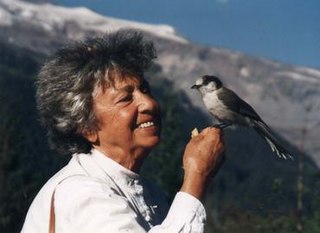
Nina Graboi was a Holocaust survivor, artist, writer, spiritual seeker, philosopher, and influential figure in the sixties psychedelic movement. After fleeing the Nazis in Europe and spending three months in a detention camp in North Africa, she and her husband came to United States as refugees. As a close friend and colleague of Timothy Leary's and Richard Alpert's, she was co-founder and director of the League for Spiritual Discovery's New York Center during the psychedelic era. The center was the first LSD-based meditation center in Manhattan. She also worked closely with Jean Houston, Abraham Maslow, Stanley Krippner, and Alan Watts.
Entheogenic drugs have been used by various groups for thousands of years. There are numerous historical reports as well as modern, contemporary reports of indigenous groups using entheogens, chemical substances used in a religious, shamanic, or spiritual context.
References
- 1 2 3 Michael Redmon (September 14, 2011). "Park Lane". Santa Barbara Independent. Retrieved July 4, 2016.
- ↑ Mary K. Mewborn (2002). "Real Estate News". Washington Life Magazine. Retrieved July 3, 2016.
- 1 2 3 4 5 6 7 8 9 Stacey Scewczyk (May 13, 2014). "Millbrook Revisited". Staceface.net. Retrieved July 3, 2016.
- 1 2 3 Janine Stankus (December 26, 2008). "Hitchcock estate home to rare scientific finds". Zwire. Retrieved July 3, 2016.
- 1 2 3 Bob Simmons (February 19, 2012). "Bob Simmons on Timothy Leary and the Raid on Millbrook". The Local – East Village. New York Times. Retrieved July 3, 2016.
- 1 2 "John Foreman 1945 – 2016". Millbrook [New York] Independent. April 5, 2016. Archived from the original on January 18, 2017. Retrieved July 3, 2016.
- 1 2 3 Carrie Hojnicki (July 28, 2017). "Timothy Leary's Hitchcock Estate in Millbrook, New York, May Be the State's Strangest Home". Architectural Digest . Retrieved February 4, 2018.
- ↑ "Surprising List of 10 New Englanders Turned On By Timothy Leary". New England Historical Society. 2013. Retrieved July 3, 2016.
- ↑ Lee, Martin A.; Shlain, Bruce (1992). Acid Dreams: The Complete Social History of LSD : The CIA, the Sixties, and Beyond. Grove Press. pp. 97–98. ISBN 978-0802130624.
- 1 2 Devin Lander (January 30, 2012). "League for Spiritual Discovery". World Religions and Spiritualities Project. Retrieved July 4, 2016.
- ↑ Leary, Timothy; Alpert, Richard; Metzner, Ralph (2008). The Psychedelic Experience: A Manual Based on the Tibetan Book of the Dead. Penguin Classics. p. 11. ISBN 978-0141189635.
- ↑ Leary, Timothy (1983). Flashbacks. Heinemann. p. 206. ISBN 0434409758.
- ↑ Graboi, Nina (May 1991). One Foot in the Future: A Woman's Spiritual Journey. Aerial Press. p. 164. ISBN 978-0942344103.
- ↑ "Hudsonia Ltd".
- 1 2 3 Green, Penelope (May 2, 2024). "Peggy Mellon Hitchcock, Who Helped Timothy Leary Turn On, Dies at 90". The New York Times . Retrieved May 3, 2024.